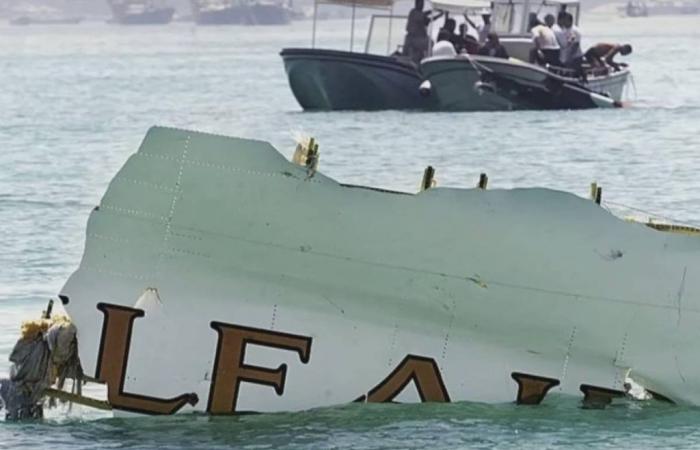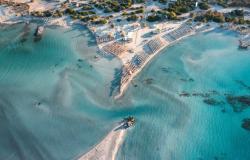
August 23, 2000. At 4.52pm the flight takes off from Cairo International Airport, Egypt. Gulf Air 072 bound for Manama, Bahrain, with 143 people on board. But a few minutes after landing, due to a failed go-around, due to the impossibility of landing on runway number 12, the plane crashes into the waters of Persian Gulf, killing all passengers and crew. Gulf Air Flight 072 is considered the worst plane crash in Bahrain and one of the most serious to happen to an Airbus A320, surpassed in 2007 by the Tam Flight 3054 disaster in Rio de Janeiro.
The accident
The aircraft involved in the accident on August 23, 2000 is a Airbus A320-212, with 6 years of life and 17,370 accumulated flight hours. The commander of the Gulf Air flight headed to Bahrain that day is called Ihsan Shakeeb, he has 4,416 hours of flying experience, of which 86 as commander. Alongside him is the first officer, 25-year-old Khalaf Al Alawi, with 608 hours of flight experience, 408 of which on an Airbus A320.
On flight 072, which will arrive at the departure gate late, approximately 25 minutes before the scheduled departure time, and will take off at 4.52pm, the aircraft is piloted by Commander Shakeeb and first officer Al Alawi is responsible for monitoring the instruments of flight. At 7.26pm the flight controller at Manama airport authorized the Gulf Air flight to land at Manama airport, the commander reported to the operator that he had extended the flaps and landing gear, but that despite having sighted the runway landing, and being 297 meters above the ground, the aircraft is not stabilized. From this moment, the pilots will begin a series of incomprehensible maneuvers. “I don’t think we’ll make it”the commander is heard saying in the communications between the plane and the flight operator, who authorizes it to make an orbit, or rather a risky 360 degree turn.
But things don’t seem to be going right and at 7.28pm, Commander Shakeeb reports to the control tower that he has missed the runway: “…we have gone further [la pista]”, declares the captain, who asks to be able to carry out a hung up, which allows you to interrupt the landing maneuver of an airplane and regain altitude. The black box will record the master warning sounding for 14 seconds, and the commander stating in a worried tone: “speed, excessive speed...”. The aircraft was flying at an altitude of 321 meters and at crazy speed of 354 km/h.
A few seconds after activating thealarm, the black box will register a forward movement of the control stick from the commander’s side, the side sticker will be held at 13.3 degrees from the neutral position, the pitch of the aircraft goes from 5 degrees upwards to approximately 15, 5 degrees down. But that’s not all: the speed increases from 357 km/h to 433 km/h and the acceleration decreases. At 7.30pm, while the aircraft is at an altitude of 306 meters and a speed of 409 km/h, the commander will be heard from the recordings to say: “completely retract the flaps” and the first officer respond: “zero“. After this last conversation, Gulf Air Flight 072 will crash into the Persian Gulf, which at the point of the violent impact was only 3 meters deep, causing it to completely disintegrate. crash all passengers and crew members will perish.
The investigations and causes of the crash
The Bahrain Civil Aviation Affairs (CAA), the National Transportation Safety Board (NTSB), the Bureau d’Enquêtes et d’Analyses pour la sécurité de l’aviation civil were tasked with investigating the causes that led to the tragedy of Gulf Air Flight 072. (Bea) and the Directorate General of Civil Aviation & Meteorology (DGCAM). Investigations revealed a number of procedural errors committed by the pilots, who did not adhere to several standard operating procedures.
One of the procedures considered “unconventional” it was there‘orbit which the commander carried out at low altitude and too close to the landing strip. The incorrectly executed go-around also contributed to the tragedy, as during the maneuver the pilots were victims of what is called spatial disorientationor a somatogravic illusion, which gave them the false perception of having begun a pitch upwards, while the plane was diving downwards.
The investigations highlighted theinadequate training of the pilots, who failed to coordinate during the most critical phases of the flight and the airline’s unsatisfactory flight data analysis system. The combination of all the factors listed then led the plane to crash into the Persian Gulf, leaving no escape for the 143 people on board.
What is the somatogravic illusion?
In aviation, the so-called somatogravic illusion it’s a type of optical illusion which creates in the pilot the perception of climbing, while in reality the aircraft is descending. This happens especially, as in the case of the Gulf Air flight, during night flights, when it is easier to lose orientation in the dark.
The Armenian Armavia flight 967 also suffered the same fate as the Gulf Air flight, which in 2006 crashed during a go-around while flying from the Armenian capital Yerevan to Sochi, Russia, killing all passengers on board. Also in the case of the Armavia flight, the pilots were victims of spatial disorientation during the go-around maneuver, which confused them to the point of causing the plane to crash into the Black Sea.





